Reshaping Raleigh: Environmental Designer Brings Iconic Spaces to Life
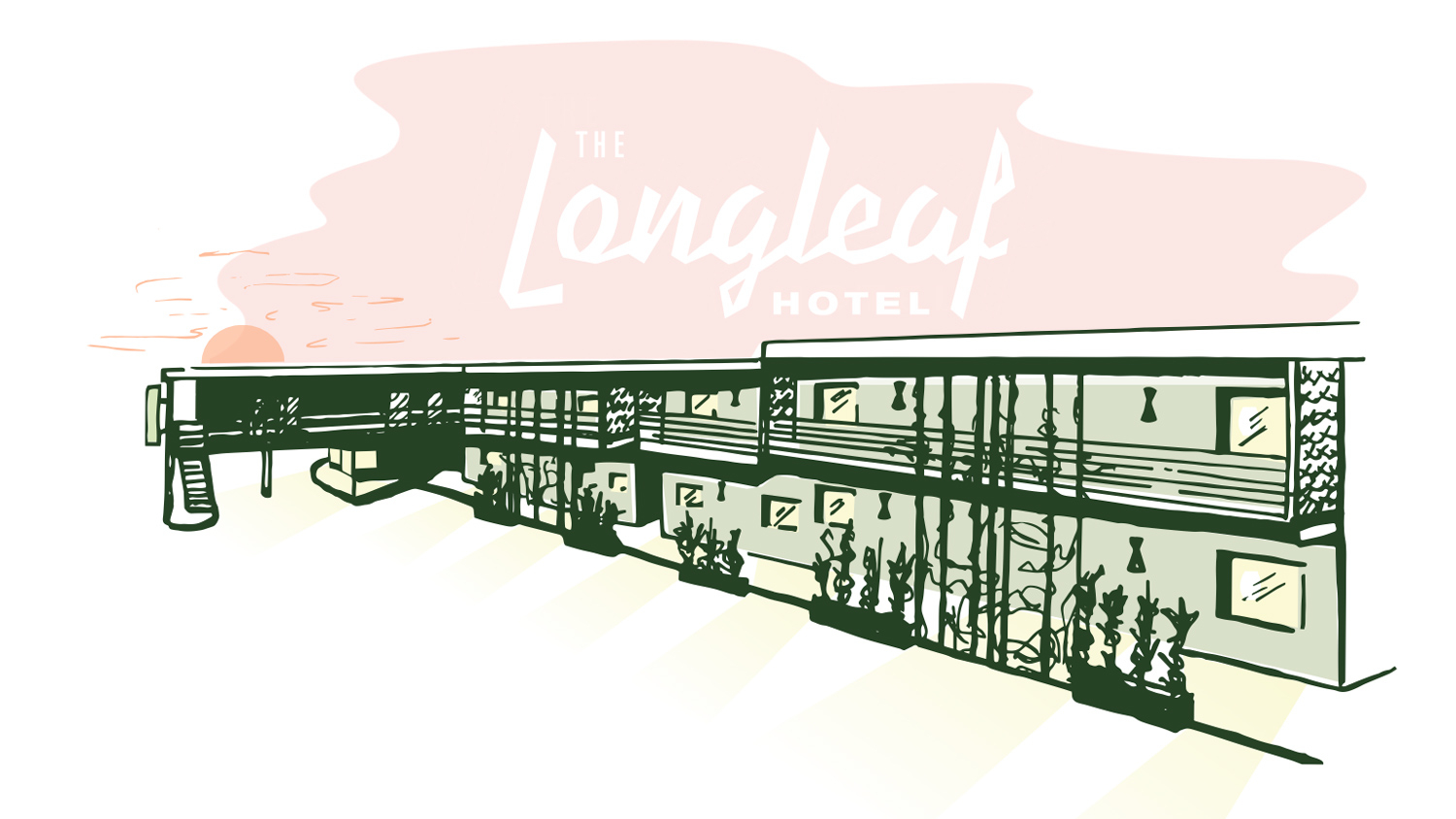
Gajownik’s Creative Office has worked on a variety of retail projects that have shaped the city of Raleigh, including The Longleaf Hotel, Transfer Co. Food Hall, Jubala, the offices of Red Hat and establishments by Chef Ashley Christensen including Beasley’s Chicken + Honey, Fox Liquor Bar, Poole’side Pies and Death & Taxes, to name a few.
Initially drawn to aerospace engineering, Gajownik’s trajectory shifted during a single semester when he realized math wasn’t his forte. In his third year at NC State, Gajownik transitioned into the graphic design program, where advisor Meredith Davis guided him toward environmental design – an area where built environments serve as extensions of brand identities.
An internship at Red Hat during his senior year marked a pivotal moment in Gajownik’s career. The company was expanding rapidly, opening offices worldwide that strived for consistent yet regionally attuned office spaces. He began to translate the company’s brand into environment graphics and furnishings around the world.
“I think a lot of designers think you need to go to New York or San Francisco or London to prove yourself – I did too,” he says. But every time he would consider offers in bigger cities he wondered about life balance. Dining at Poole’s Diner, Christensen’s first restaurant, with his wife helped solidify that Raleigh was a place where he wanted to be and that he wanted a hand in making the city a place where others wanted to be.
So he took a risk. He overheard the bartender talking about Christensen’s new projects and was determined to work on projects that created that sense of ambiance. So he designed and printed a portfolio mailer and asked the bartender to deliver it to Christensen. A month later they met, and he was hired to work on three new concepts she was opening: Beasley’s, Chuck’s and Fox Liquor Bar.

Next, working with Chef Matt Kelly (Mothers & Sons Trattoria, Saint James Seafood, Lucky’s Delicatessen) in Durham expanded his experience even further into interior design elements, selecting light fixtures, paint colors and tile.
“That’s when I started to really hit my stride, and I felt like I was carving out a niche that was needed in the area,” Gajownik says. Combining the roles of brand designer and interior designer while learning how to collaborate with architects allowed him to convey the entire vision for a space.
After working on Transfer Co. Food Hall in his neighborhood, Gajownik had the chance to work on The Longleaf Hotel, a 25,000 square-foot, 50+ room space in downtown Raleigh in a former Travelodge that had fallen on hard times.
This attention to detail is at the heart of why Gajownik calls himself an environment designer. “It does include interior design, but it also includes wayfinding, how people move through a public space, then on to room service menus, directional signs in the lobby and merchandise,” he says.
Gajownik’s hand touches everything on the property, including the 16-foot neon sign. He breaks projects up into naming and brand identity, followed by messaging, print and merchandise design, digital design and environment/interior design.
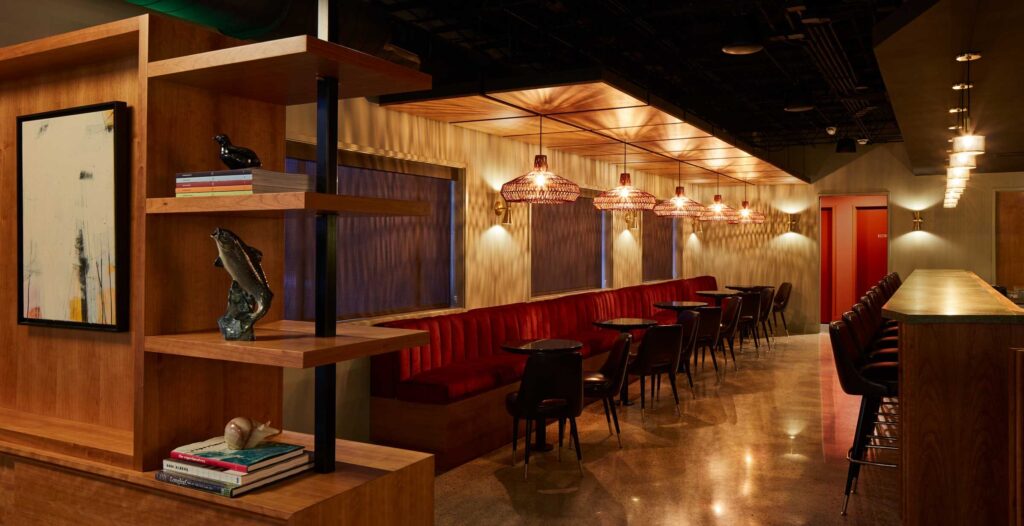

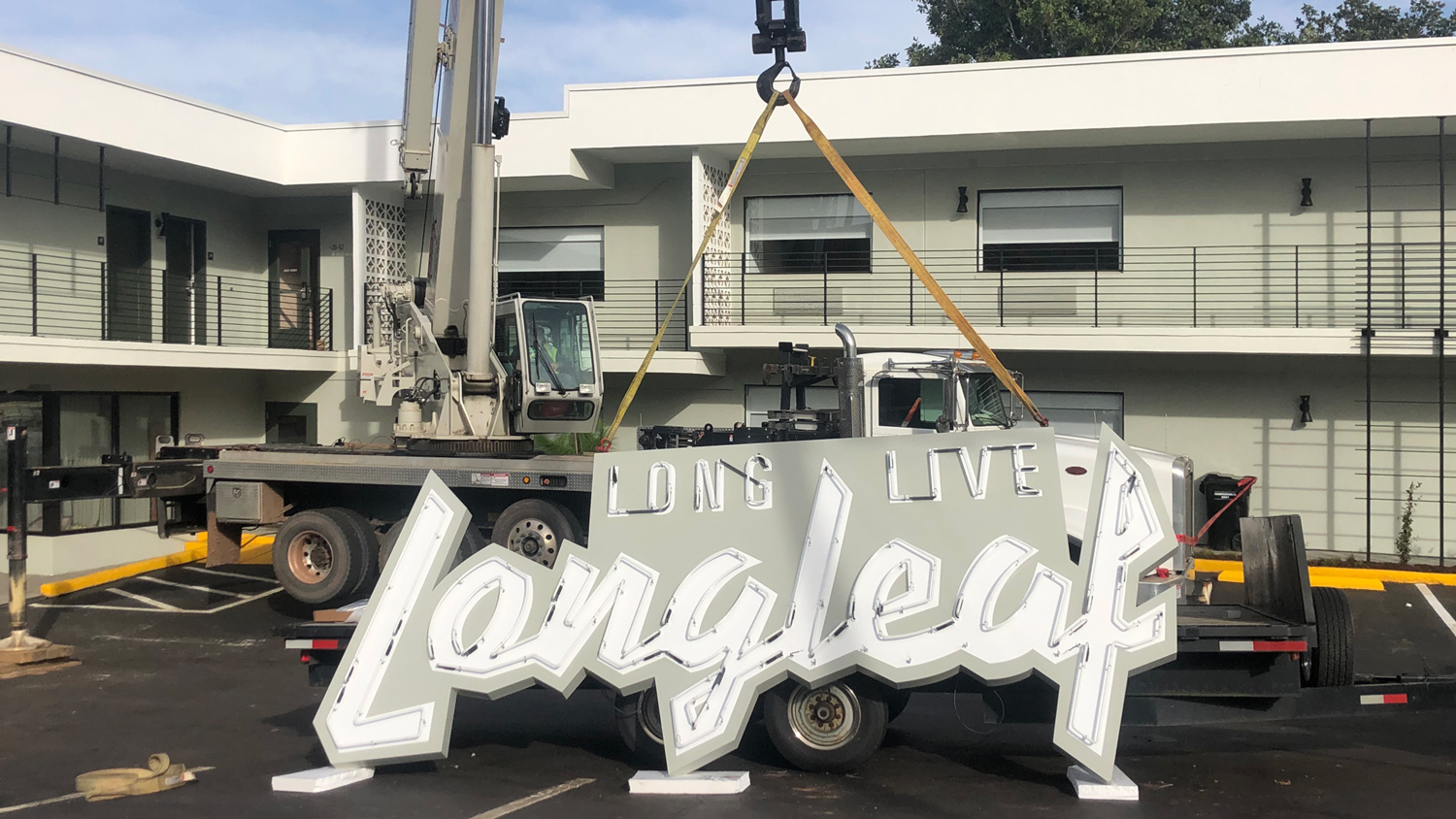
He enjoys being on site and getting away from sitting at his computer all day long, having the chance to interact with architects and local makers alike. Getting outside is a huge part of his process – during a site walk, he found star-shaped breeze blocks, similar to what you’d see in mid-century ranch-style homes. “They were hidden under stucco, so we’re literally pulling off the stucco to reveal these original breeze blocks, which informed the identity for The Longleaf. And that inspiration would never have happened if I was just sitting online looking at other motels,” he says.
Rhode’s Motor Lodge in Boone – his second hotel concept for Loden Hospitality – is the latest project to have Gajownik’s touch. Even the name – referencing the rhododendrons prevalent in the area and the mid-century Americana elements common to the 1960s, conveys the environment he wants guests to experience.
Rustic and mid-century touches can be seen throughout, from the freestanding fireplace to the low-wraparound seating in the lobby. Gajownik carved all the room number signs himself with a router to give them the rustic feel of camp shelters, while the rooms feature block-printed art, worn-in leather and vintage coolers as ice buckets.

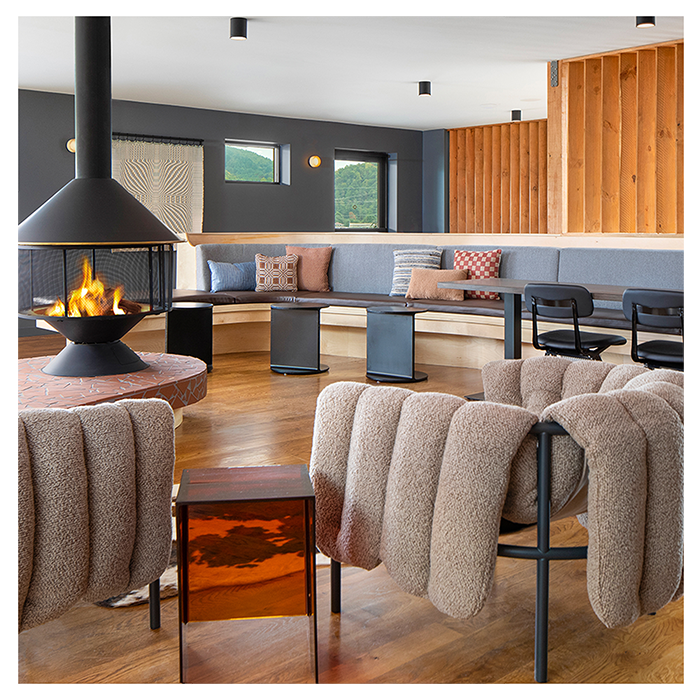
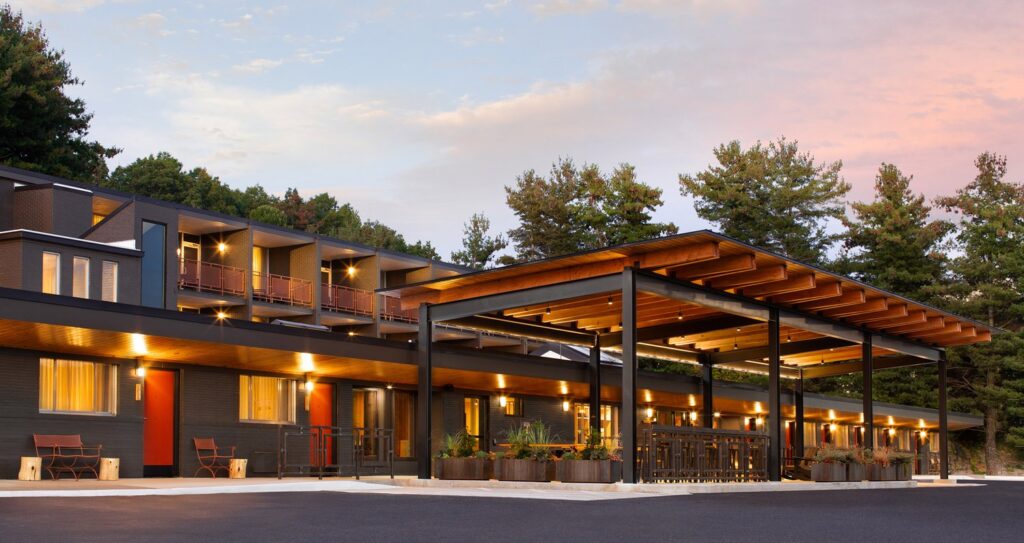
To this day, Gajownik credits the College of Design with setting the foundation for all of his current work. “Typography was transformative for me,” he says. “When I was in London, I started scouring for type on the streets, and it solidified for me that type is a key communicator – it conveys style but more importantly its design conveys a message.”
For Ajja, Chef Cheetie Kumar’s latest project, Gajownik subtly references Turkic and Arabic languages and calligraphy with skewed dots punctuating the double j’s. This small but intentional choice hints at the Eastern Mediterranean fare while leaving the typographic palette open to a myriad of styles, like the food itself.
The joy Gajownik finds in his work stems from translating abstract concepts, starting with typography, into tangible, interactive designs. Witnessing people enjoy spaces like The Longleaf Lounge or Arrow Cuts & Shaves, where he has played a part in the design of 10 shops, keeps him connected to Raleigh’s dynamic community.
“There are people here with great ideas that I can help bring to life.”
For more about Joshua and his work, visit joshuagajownik.com.
This post was originally published in College of Design Blog.